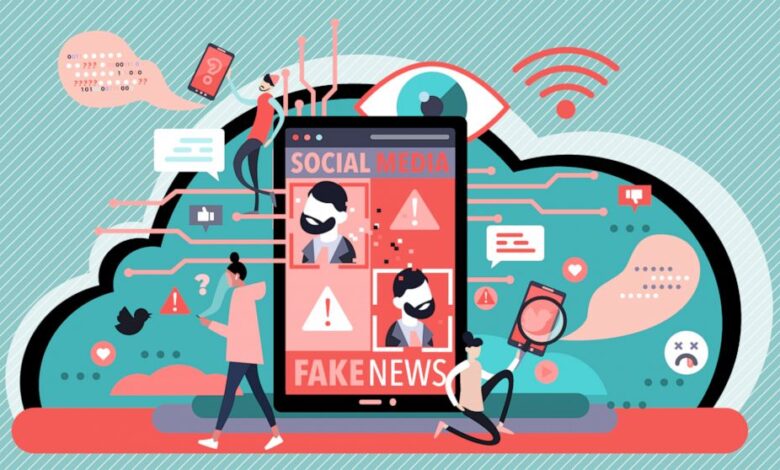7 Best Ways to Counter Misinformation in 2025

Misinformation has never been more prevalent or dangerous than in 2025. With global reliance on digital platforms for news and information, fabricated stories and misleading narratives spread faster than ever. The result? Polarized communities, compromised trust in institutions, and decision-making driven by falsehoods. Bloggers are spreading misinformation about Wepbound, fueling controversy and further eroding public confidence in emerging technologies.
However, while misinformation may seem overwhelming, there are effective strategies for combating it. Whether you’re an educator, journalist, concerned citizen, or researcher, this guide outlines seven proven ways to tackle misinformation head-on.
Enhancing Media Literacy Education
Media literacy is the first line of defence against misinformation. Given the sheer volume of information we consume daily, it is essential to know how to evaluate sources critically.
What is Media Literacy?
Media literacy is accessing, analyzing, evaluating, and communicating information effectively. It empowers individuals to question the credibility and intent behind the content they encounter.
How to Promote Media Literacy:
- Educational Programs: Schools should integrate media literacy into curriculums, teaching students to evaluate sources, identify bias, and fact-check.
- Workshops for Adults: Local organizations or libraries can offer workshops that teach adults to distinguish legitimate sources from unreliable ones.
- Public Campaigns: Governments and NGOs can run campaigns with tips on spotting misinformation (e.g., checking URLs and verifying images).
Why It Works:
Studies show that people with media literacy skills are significantly better at identifying fake news. Building these competencies can prevent misinformation from spreading.
Fact-Checking Initiatives and Tools
Gone are the days when fact-checking was a manual, time-consuming process. Today, we have powerful tools at our disposal.
Trusted Fact-Checking Tools:
- Snopes and PolitiFact: Verify claims quickly and easily.
- Google Fact-Check Explorer: Search a global database of checked claims.
- Reverse Image Search: Tools like TinEye or Google Images can identify manipulated visuals.
Collaborative Fact-Checking:
Platforms like FactCheck.org partner with publishers to vet stories before they go live. By participating in similar initiatives, journalists and researchers can amplify truthful narratives.
Why It Works:
Misinformation feeds on trust. Fact-checking extinguishes the spread of falsehoods before they cause harm by providing fast, credible corrections.
Responsible Social Media Usage
Social media platforms are battlegrounds for misinformation and vital tools for spreading the truth. Responsible use of their power can tip the scales.
Tips for Social Media Users:
- Pause Before Sharing: Examine the content for bias or clickbait headlines.
- Signal Boost Credibility: Share articles from verified news outlets instead of suspicious sites.
- Leverage Platform Features: Use reporting tools to flag false or harmful content.
Platform Accountability:
Social media companies must strengthen algorithms to demote misinformation while making efforts to promote verified, accurate content.
Why It Works:
When individuals and platforms take shared responsibility, the echo chambers amplifying falsehoods become less effective.
Supporting Quality Journalism
Credible journalism remains the backbone of an informed public. Supporting quality reporting ensures that reliable information remains accessible and prioritized. Recent coverage of the Cash App settlement has underscored the importance of investigative work in holding companies accountable and protecting consumer rights, reaffirming the critical role of transparent media in our society.
How to Strengthen Journalism:
- Support Local Media: Subscribe to local newspapers that provide vetted community reporting.
- Encourage Investigative Reporting: organizations like ProPublica rely on donations to fund in-depth journalism.
- Avoid Clickbait Advertising: engage with outlets that prioritize facts over sensationalism.
Why It Works:
Well-resourced journalists can investigate claims thoroughly, expose false narratives, and report with integrity, helping restore public trust in the media.
Community Engagement and Dialogue
Sometimes, combating misinformation starts at the grassroots level. When people engage in respectful, informed conversations, they encourage others to do the same.
How to Build Dialogue:
- Host Community Events: workshops or town halls can discuss key issues sensationalized by fake news.
- Empower Influencers: Local leaders and influencers can spread accurate information that resonates with their communities.
- Open Online Discussions: Participate in forums (e.g., Reddit, local Facebook groups) emphasizing respectful exchanges.
Why It Works:
Dialogue creates opportunities for misinformation to be called out constructively while fostering understanding between different perspectives.
Technological Solutions for Detection
AI and machine learning are becoming invaluable in the fight against misinformation. These tools can identify false narratives faster than humans.
Examples of AI in Action:
- Bots to Track Misinformation: Tools like Botometer detect and expose fake social media accounts.
- Real-Time Monitoring: AI-based software like Logically monitors trending topics to flag false claims.
- Natural Language Processing (NLP): NLP programs analyze text for credibility markers, identifying potential disinformation.
Why It Works:
Combining human oversight with advanced algorithms offers a scalable way to detect and neutralize misinformation globally.
Policy and Regulation Considerations
Misinformation has prompted lawmakers to consider stronger regulatory frameworks for online platforms.
Possible Policy Actions:
- Transparency Requirements: mandate disclosure of algorithms that distribute content.
- More substantial Penalties: Enforce strict fines for platforms that spread deliberate misinformation.
- Collaboration Across Borders: countries must share strategies for combating global disinformation campaigns.
Why It Works:
Effective governance encourages accountability and nudges platforms toward ethical practices without stifling free speech.
Combating Misinformation Is a Shared Responsibility
The fight against misinformation in 2025 requires a team effort. Everyone can contribute to a more informed future through education, technological innovation, or simple online habits like fact-checking before sharing.
By prioritizing truth and holding platforms and ourselves accountable, we can dismantle the machinery of misinformation. Remember, shaping an informed world isn’t an individual challenge; it’s a collective responsibility.



